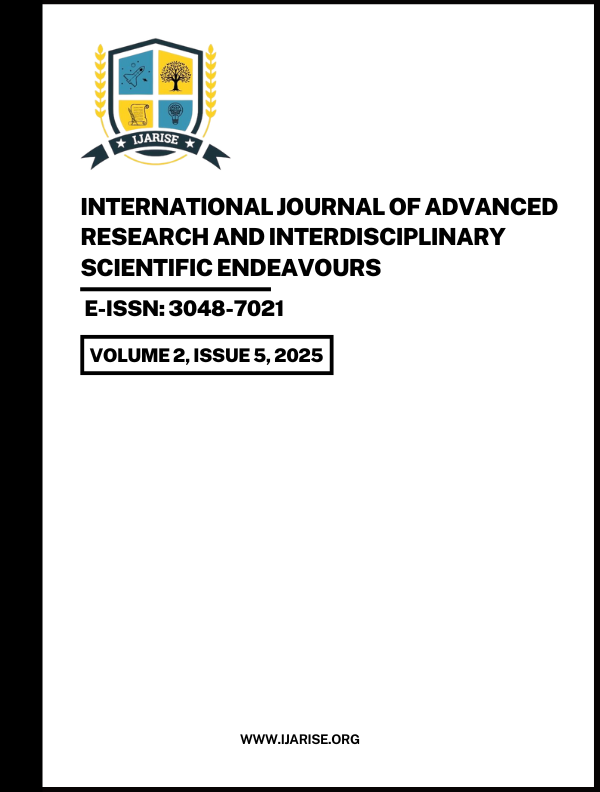Published 2025-05-30
Keywords
- Star Formation,
- Molecular Clouds,
- Chemical Pathways,
- Protostars
How to Cite
Copyright (c) 2025 International Journal of Advanced Research and Interdisciplinary Scientific Endeavours

This work is licensed under a Creative Commons Attribution 4.0 International License.
Abstract
The formation of stars from interstellar dust and gas is a complex and multifaceted process that plays a crucial role in the evolution of galaxies and the universe at large. This study, titled "From Dust to Stars: Investigating the Chemical Pathways in Stellar Birth," aims to elucidate the intricate chemical pathways that govern the transition from molecular clouds to stellar objects. Utilizing a combination of observational data, laboratory experiments, and theoretical modeling, we explore the physical and chemical processes that facilitate star formation. Recent advancements in observational techniques, particularly through the use of the Atacama Large Millimeter/submillimeter Array (ALMA) and the James Webb Space Telescope (JWST), have provided unprecedented insights into the molecular composition of star-forming regions. These observations reveal the presence of complex organic molecules and the role of dust grains in catalyzing chemical reactions that lead to the formation of stars. Our research focuses on the key stages of stellar birth, including the initial collapse of molecular clouds, the formation of protostars, and the subsequent accretion of material. We investigate the influence of environmental factors, such as turbulence and magnetic fields, on the chemical pathways involved in star formation. Additionally, we examine the impact of feedback mechanisms from young stars on their surrounding environments, which can either promote or inhibit further star formation. Through a comprehensive analysis of the chemical processes at play, we aim to provide a deeper understanding of the conditions necessary for star formation and the implications for galaxy evolution. This study not only contributes to the fundamental knowledge of stellar astrophysics but also has broader implications for our understanding of the origins of planetary systems and the potential for life beyond Earth.


